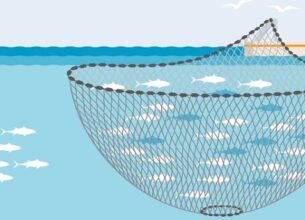Purse Seine Fishing
Purse Seine Fishing
Why in News?
- Recently, The Centre has told the Supreme Court that a ban imposed by certain coastal States on purse seine fishing, which is known to disadvantage endangered species, is not justified
Highlights
- Currently, bans on purse seine fishing are implemented in the territorial waters of Tamil Nadu, Kerala, Puducherry, Odisha, Dadra and Nagar Haveli and Daman and Diu, and the Andaman and Nicobar Islands up to 12 nautical miles.
- While States such as Gujarat, Andhra Pradesh, Goa, Karnataka, West Bengal have not imposed any such ban.
- A purse seine is made of a long wall of netting framed with floating and leadline and having purse rings hanging from the lower edge of the gear, through which runs a purse line made from steel wire or rope which allow the pursing of the net.
- The technique has been widely deployed on India’s western coasts.
- Purse-seine fishing in open water is considered to be an efficient form of fishing.
- It has no contact with the seabed and can have low levels of by catch.
- It can also be used to catch fish congregating around fish aggregating devices
- It is used in the open ocean to target dense schools of single-species pelagic (midwater) fish like tuna and mackerel
- Fishing is a state subject and the management plan for marine fisheries in territorial waters is the job of the State.
- State subject consists of 61 subjects (originally 66 subjects).
- These are of local importance such as, local government, public order and police, agriculture, forest, public health and sanitation, fisheries, education, State taxes and duties. The states under normal circumstances have exclusive power to make laws on subjects mentioned in the State List.







